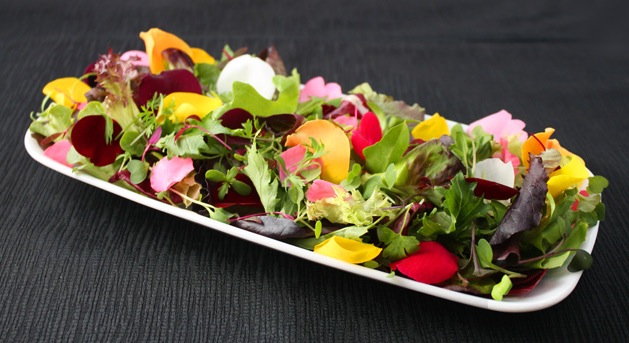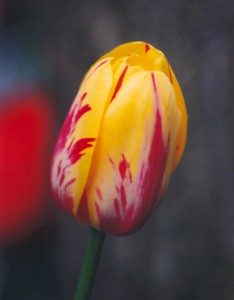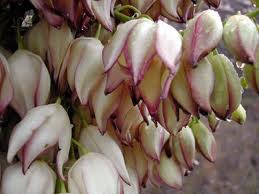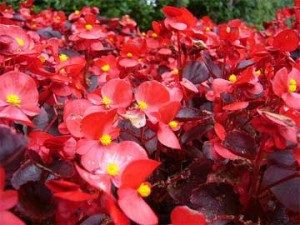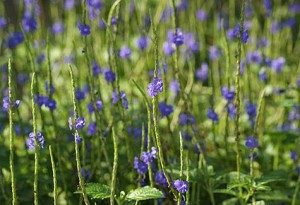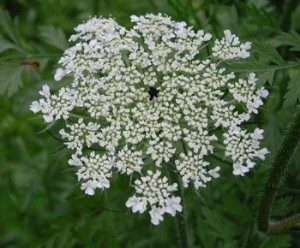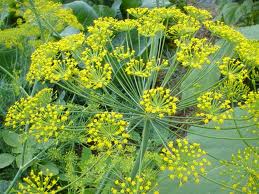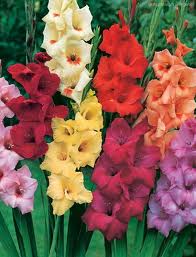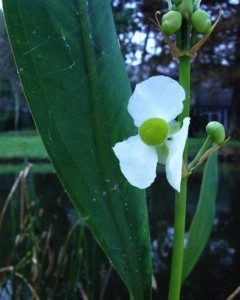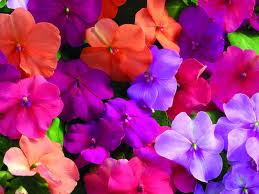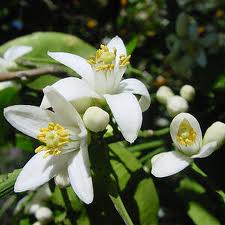Tulips, Yucca, Begonias, Blue Porterweed, Queen Ann’s Lace, Dill, Gladiolas, Wapato, Impatiens, Citrus
Tulips are one of those wonderful flowers you hear that are toxic. The answer is yes and no. The petals are quite edible raw or cooked though they loose their color on cooking. They can have many flavors: Beans, peas, cucumbers and none. Pink, peach and white blossoms are the sweetest, red and yellow the most flavorful. While you can use them to garnish salads their more common use is to hold appetizers or dip. If you use the entire blossom cut off the pistil and stamens from the center of the blossom. The bottom ends of the petals can also be bitter so cut them off as well when used individually. So what is toxic? Not the flower. It’s the yellow inner core of the tulip bulb. It has to be cut out before the rest of the bulb can be cooked and eaten. Also know some people are quite allergic to tulips. Just touching them will cause n allergic reaction. See full article on site. In flower langauge the red tuliup is a declaration of love, a yellow tulip hopeless love, a variagated tulip beautiful eyes.
If tulips have a bit of a reputation then Yucca blossoms should as well. I have read in many a foraging book that yucca blossoms are edible raw. The problem is some are and some are not. The ones that grow in my area, Yucca filamentosa, are not, which is unfortunate. They have a wonderful crunchy texture, and a sweet taste. You really want to eat them. But the Y. filamentosa also has saponins, call it plant soap. After eating one you soon get a bitter astringency in the back of your mouth and throat, like you got when as a kid you utter a dirty word and mom had you taste a bar of soap. It brings back those days. So yes, yucca blossoms are edible raw, but try yours first, just a little. Then wait half a minute to a minute. If all is well, enjoy. My local blossom while not pleasant raw does cook up nicely. I boil them for a few minutes and then use them in several dishes. See full article on site and video.
My video and separate article on Begonias got me mentioned in the national New Zealand magazine about them. It’s a small electronic world. Begonia blossoms are edible raw or cooked, as are the leaves of most of the begonias, particularly the wax begonias (websites that say wax begonias are not edible are repeating an significant mistake from an earlier book.) The flavor, like the tulips, varies with the color. It can range from swampy to sweet. The biggest problem you are going to run into with begonias is since they are usually cultivated they are also sprayed with pesticides if not other materials. You either have to raise them specifically to eat or be a lazy gardener. Either will do. Fortunately for me, and not for the state of Florida, begonias have become naturalized so I can find them in the wild. Indeed, it was some 20 years ago when I was canoeing on Rock Spring Run — read in a swamp — when I saw a begonia and wondered what it was doing in the modern urban equivalent of the middle of nowhere. The leaves reduced to a paste and mixed with sour cream, a little sugar, and then baked make a delicious tartlet. And of course, the blossoms are an attractive and tasty addition to salads, as are the leaves. You can also fry the leaves into crisps, add a little salt… tasty… See full article on site and video. In the languge of flowers Begonias are “dark thoughts.”
I do believe I was the first to publish anywhere in modern times, Internet or otherwise, that Blue Porterweed blossoms are edible. Even the venerated Cornucopia II doesn’t mention it. No doubt their edibility was known long ago because the flower has been used for at least a few hundred years to make tea, beer and as a flavoring. I am sure somewhere along the way someone tried the flowers. Locally we have two versions, a native which grows low, and a tall cultivated one. The flowers on both are edible, and the odd part is they taste like raw mushrooms. As with many delicate flavors the nose is quite involved and it takes a few moments for the flavor to come through. Tasters find it amazing. The flavor does not survive cooking. Incidentally, the leaves are used to make a tea and beer and the stem is used for flavoring. See full article on site and video.
Among the wild flowers I played with as a kid was Queen Ann’s Lace, the wild carrot. Its bird’s nest blossom with a red dot in the middle was easy to identify. It’s also hairy and smells of carrots. Perhaps surprisingly, it’s not native to North America but an import from Europe. Centuries ago the modern carrot was cultivated from the Queen Ann’s Lace, and by the way, the green tops of the cultivated carrot are edible as a flavoring or a green, if they are raised in a wholesome environment.) The blossoms of Queen Ann’s Lace is carrot flavored and strong. Use sparingly until you are used to it. Also make sure you are not picking poison hemlock blossoms. The wild carrot smells of carrot, the stem is hairy, and look for a red dot in the middle of the blossom. Poison hemlock has none of these. See full article on site.
As is often said, travel is a broadening experience. When you go to a different land it’s exciting to see plants you don’t know specifically but you know what family they are in. The first time I went to Greece I saw wild dill growing everywhere, besides wild figs. Then years later on a business trip to extreme south southern California there was dill again. Wouldn’t you know I happen to live in a state where it’s not found in the wild. Oddly dill blossoms are stronger flavored than the leaves. Tangy, use the flowers as you would the herb and seeds.
When you live where the ground freezes annually — called winter — you have to wrap some plants and take others inside. That was an annual assignment when I was growing up and on top of the list was digging up gladiola bulbs every fall. And every year my mother had a huge gladiola garden with boxes of bulbs overwintering in the basement (also not found in the South.) Had I known gladiola blossoms were edible it might have made the childhood chore more bearable. Glads (Gladiolus) blossoms are bland, lettuce like, and you must remove the anthers… take the middle of the blossom out. Basically eat the petals. They can also be cooked. Like squash glad blossoms are often used to hold tasty tidbits. And in the language of flowers gladiolus means “strength of character.”
Among the wild flowers I have tasted the white petals of the Wapato are a first-rate delicacy. The plant itself is known for its egg-sized tubers that arrange themselves around the base like numbers on a clock. Its blossoms are very distinctive. The only problem getting to Wapato, or Wapati, is as they like to grow in water but you can often find them close to the bank. Take only the petals of the blossom. They are sweet and fragile, tasting a bit like marshmallow. No cooking here. If you use them in a salad put them on top or they will get lost. See full article on site and video.
I hate to admit it but the only place I can find this next edible flower is in cemeteries because it doesn’t grow in the wild here, Impatiens wallerana. The cultivated Impatiens are from Africa and their blossom is edible, sweet. There is no report of edibility on our native North American impatiens, called Jewelweed. Indeed, Jewelweed is edible after two boilings but there are no references to any parts edible raw. Just the opposite, all kinds of warning not to eat our native Jewelweed raw. So this is one case of where the cultivated blossom is on the raw food menu but the wild one is not.
For the home crowd one has to mention Citrus blossoms. Orange blossoms, lemons, grapefruit, calamondins, kumquat… The whole citrus club. They are, no surprise, citrusy and in fact the flavors are used often in Mediterranean cooking. When I first moved to Florida back in the Dark Ages I can still remember the first time I detected the wonderful aroma of a citrus grove in blossom. I thought it was Mayflowers, a blossom from my past, and what I will start Edible Flowers: Part Three with.

